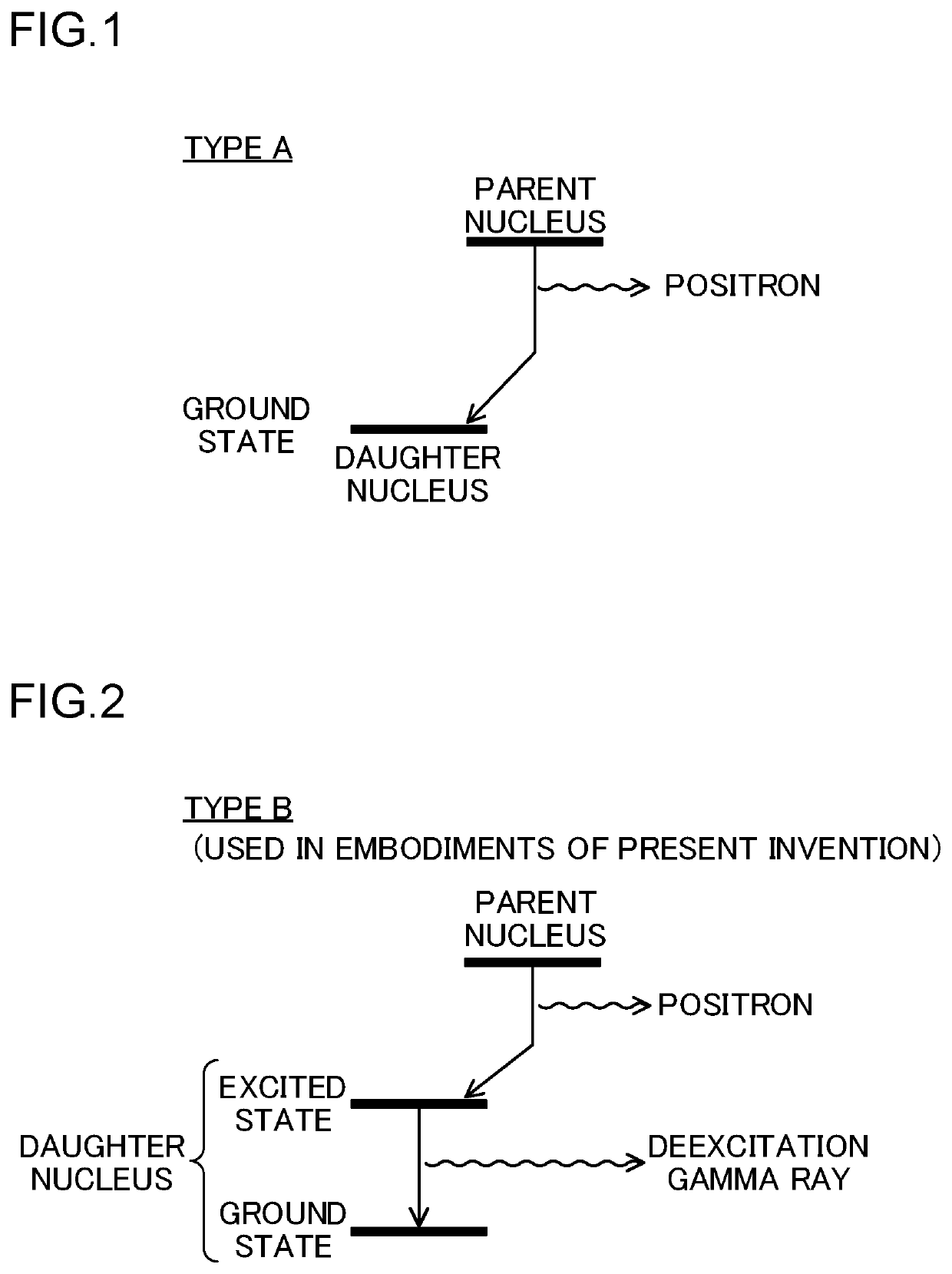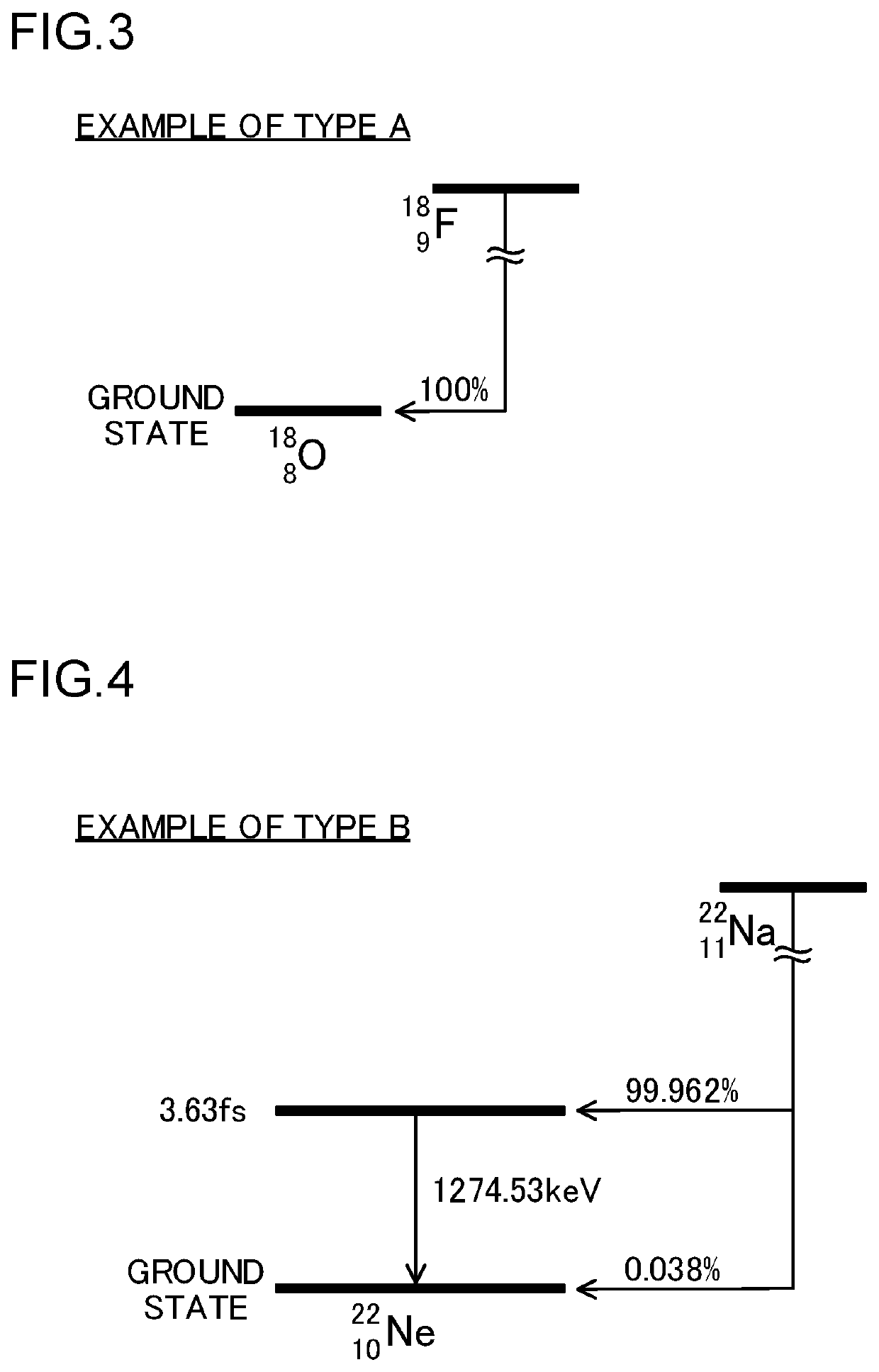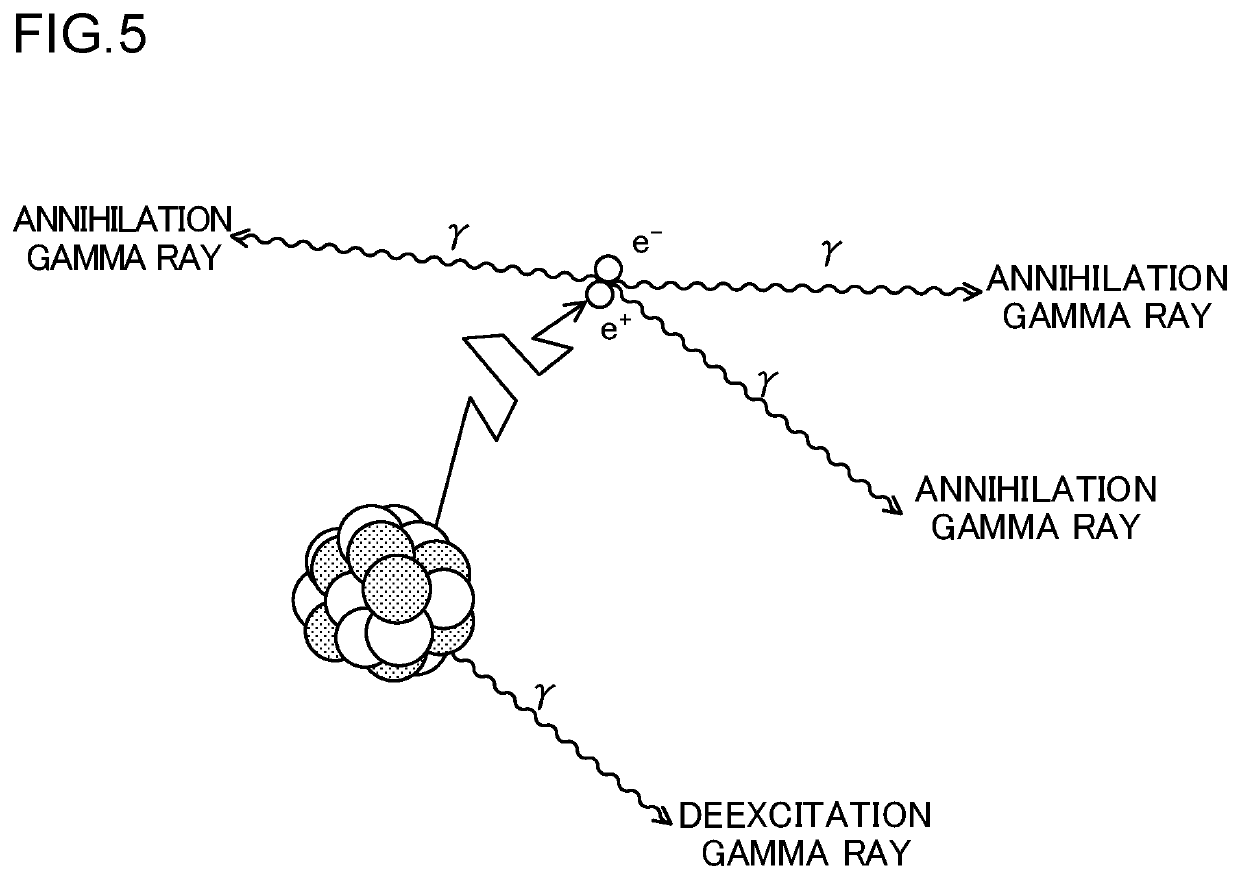Pet system with a positron lifetime measurement function and positron lifetime measurement method in a pet system
- Summary
- Abstract
- Description
- Claims
- Application Information
AI Technical Summary
Benefits of technology
Problems solved by technology
Method used
Image
Examples
first practical example
[0115]A first practical example will be described. In FIG. 14, a line 230 represents a positron lifetime spectrum obtained by histograming the positron lifetimes LT[1] to LT[n] determined with respect to the event numbers 1 to n. The positron lifetime spectrum 230 is a histogram which plots the positron lifetimes LT[1] to LT[n] determined with respect to the event numbers 1 to n with time taken along the horizontal axis and frequency taken along the vertical axis.
[0116]The positron lifetime deriver 35 generates a positron lifetime spectrum 230, and can also, based on the gradient of the positron lifetime spectrum 230, determine the average half-life of the positron in a region in the imaging target TG where a positron-emitting nucleus is present. In a positron lifetime spectrum (histogram) like the positron lifetime spectrum 230, the gradient of the positron lifetime spectrum depends on the half-life of the positron. The steeper the gradient, the shorter the half-life of the positro...
second practical example
[0118]A second practical example will be described. FIG. 15 will be referred to. For the sake of concrete description, it is here assumed that the positron-emitting nucleus is distributed in each of regions 201 and 202 in the imaging target TG that are located away from each other. Then, in a distribution image 210 of the positron-emitting nucleus, a distribution image corresponding to the region 201 appears in a region 211 and a distribution image corresponding to the region 202 appears in a region 212.
[0119]The positron lifetime deriver 35 can determine the positron lifetime spectrum and the half-life of the positron in any region in the imaging target TG (on the assumption, however, that a plurality of 4γ events have occurred based on radioactive decay of the positron-emitting nucleus in that region). From the 4γ event data based on radioactive decay of the positron-emitting nucleus in the region 201, the positron lifetime spectrum 231 and the half-life of the positron with respe...
third practical example
[0126]A third practical example will be described. Some studies have found the following: the lifetime of the positron in liquid depends on oxygen concentration in the liquid, the lifetime of the positron decreasing as the oxygen concentration increases (see Non-Patent Document 4 identified earlier). Based on the findings, application examples as described below are conceivable.
[0127]A drug that concentrates in blood in a living body (that circulates with blood) is labeled with a type B positron-emitting nucleus to prepare a positron-emitting nucleus probe. A living body administered with the positron-emitting nucleus probe is taken as the imaging target TG. Then, it is possible to obtain, from a group of 4γ event data, information on the positron lifetime at each position in the living body, and to estimate, from the information on the positron lifetime at each position in the living body, the blood oxygen level at each position in the living body. That is, it is possible to render...
PUM
 Login to View More
Login to View More Abstract
Description
Claims
Application Information
 Login to View More
Login to View More - R&D
- Intellectual Property
- Life Sciences
- Materials
- Tech Scout
- Unparalleled Data Quality
- Higher Quality Content
- 60% Fewer Hallucinations
Browse by: Latest US Patents, China's latest patents, Technical Efficacy Thesaurus, Application Domain, Technology Topic, Popular Technical Reports.
© 2025 PatSnap. All rights reserved.Legal|Privacy policy|Modern Slavery Act Transparency Statement|Sitemap|About US| Contact US: help@patsnap.com



